Visiting one of Budapest‘s thermal baths is a right of passage for anyone’s first time in this historic city. Budapest’s thermal baths are as crucial to the culture and the city as anything else you’ll see and do. Although the concept might seem strange to foreigners, once you get over the first-time jitters, you’re bound to find the experience something you’ll want to do over and over again.

The term ‘taking the waters’ is a saying the locals frequently mention. They believe that bathing in these thermal springs helps with many different health problems from arthritis to eczema. They have even been known to help soothe the mind if you’ve been experiencing any level of stress in your life. Since most baths in Budapest are unisex, this is the perfect place to go with your family, friends or as a romantic and relaxing day out with your partner.
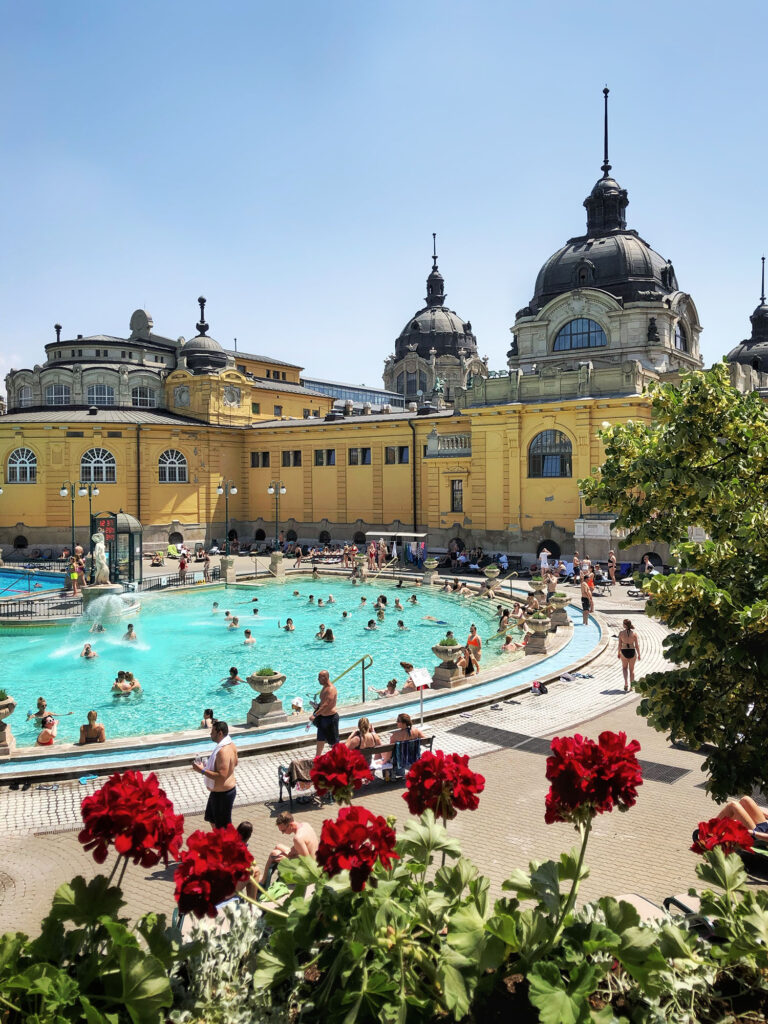
History
One of the reasons the Romans came to colonise the city we now call Budapest, was to utilise their rich wealth of thermal springs. Even today, you can visit the ruins of some of these ancient Roman baths. Romans long used thermal waters for both medical and cleansing purposes since most people didn’t have running water in their homes. The Romans knew there were many benefits gained by bathing in thermal springs. Healing elements in the water include magnesium, calcium and sulphate. These are effortlessly absorbed into your skin while bathing and help with poor circulation, arthritis and many skin conditions. Once the Turkish invaded, they constructed their own unique bathhouses in the 15th century, some of which still are standing today. While looking at history on the walls of museums is a treat, there is nothing like experiencing history for yourself!
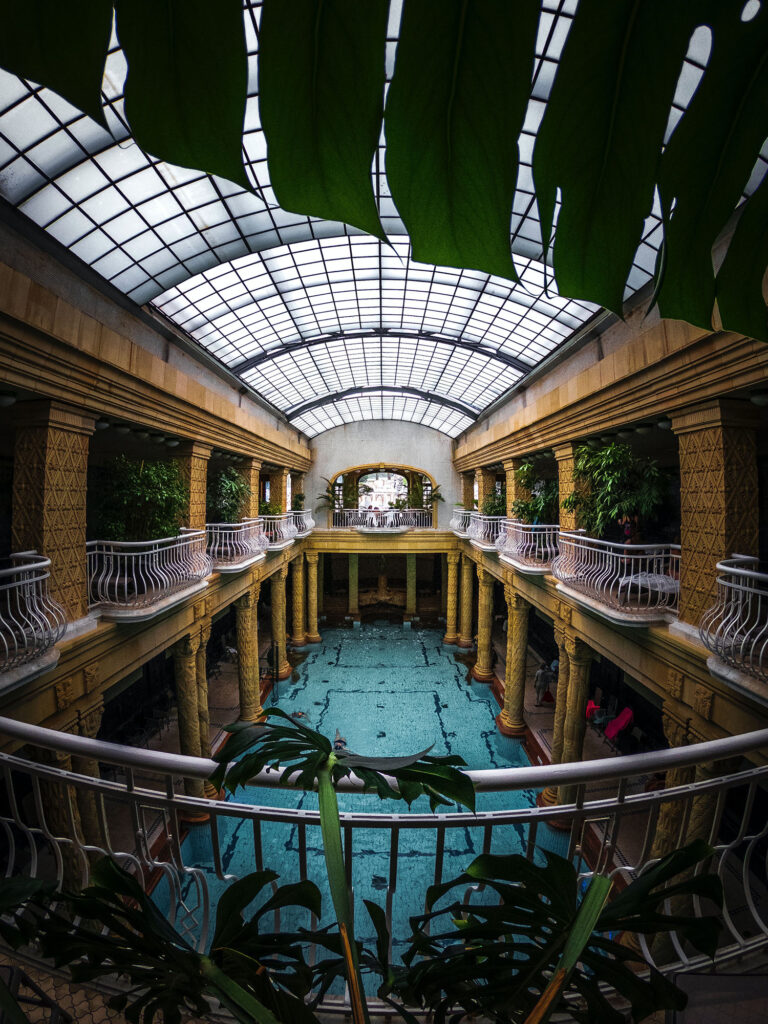
What to Expect
To prepare for your first time in the waters, it’s best to know what to expect. That way you won’t be surprised by any unforeseen steps along the way. All baths have different opening times and may differ on some policies. But for the most part, they all provide the same general experience. Depending on what vibe you’re going for will determine which place you’ll end up at. But you really can’t go wrong with any of them for an authentic experience.
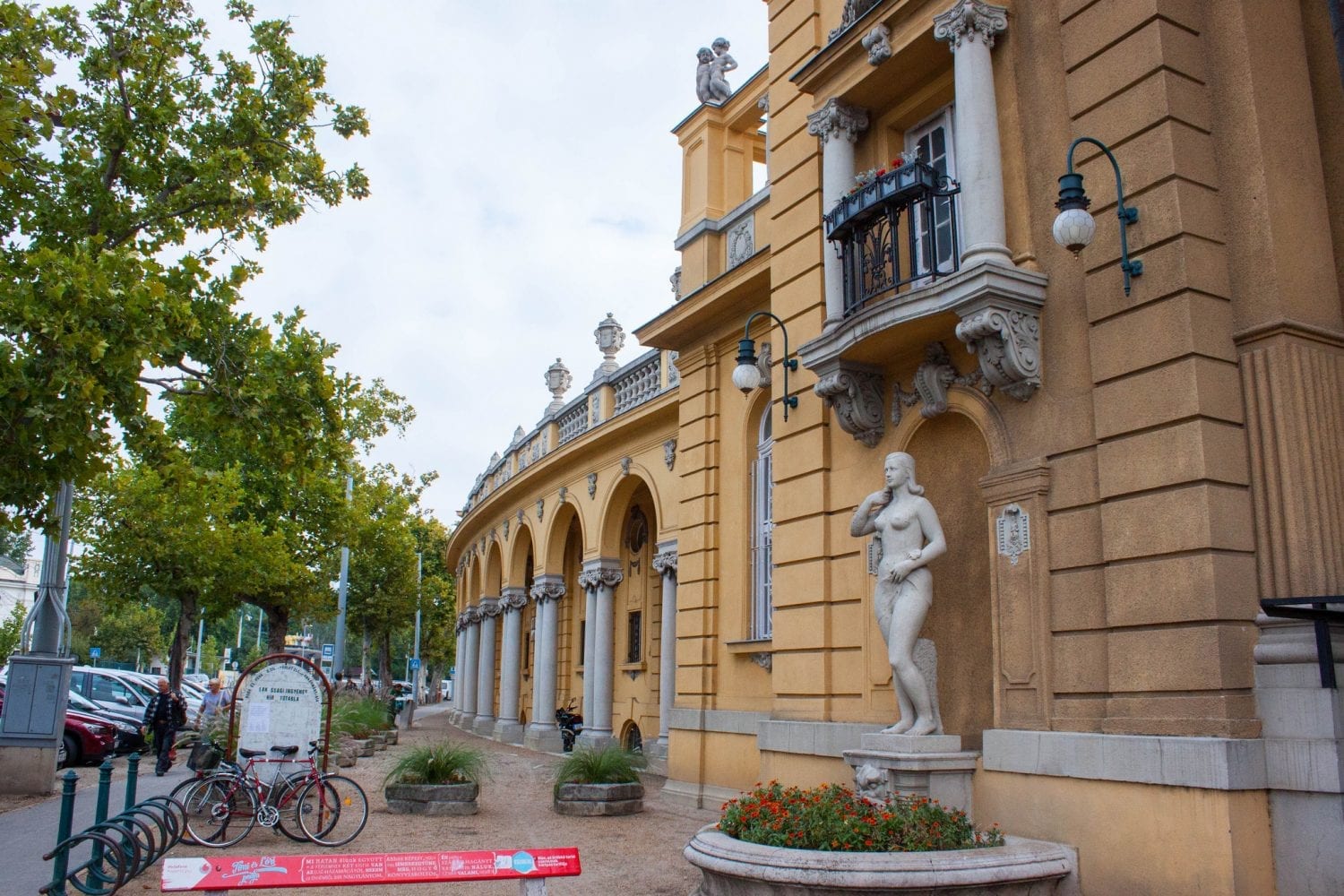
For our first time visiting a spa, we settled on the Gellert Baths. Not only are the waters here arguably located inside the most gorgeous environment, and slightly less touristy than the Szechenyi Baths, they also have a great set of amenities. But finding a spa that caters to tourists isn’t a bad thing for your first time. Some people might want to avoid the more popular locations to get a more traditional experience other might want to find somewhere that caters to the language barrier and provides ample signage and instructions will make you feel more comfortable on your first time inside.
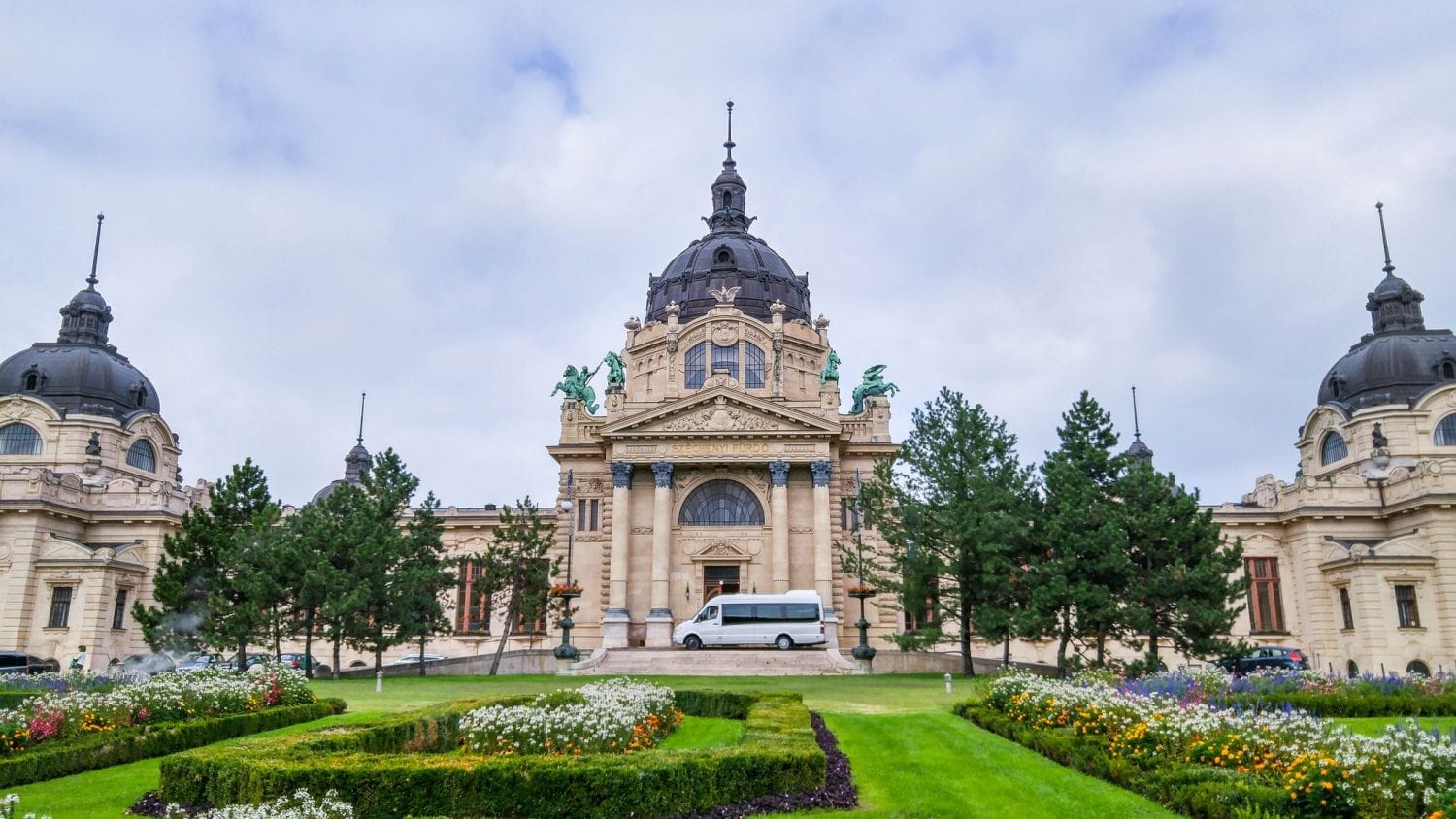
Male-only or Female-only Days
Some spas have male-only or female-only days and the hours vary from spa to spa, so be sure to check their websites before you go. If you’re interested in these same-sex days for your own comfort, be warned that these will be clothing optional. You are more than welcome to wear your bathing suit, but many will opt to go completely nude. This may make some people uncomfortable, but if you’re brave enough, the experience is very freeing.
What to Bring?
Towels
Towels are necessary for bathing, and they won’t be provided for free. You must bring your own, or you can rent one at a relatively low cost. They usually tend to be around £3 so if you’re only going once or twice it is worth it not to have to lug around a wet towel. But if you plan on visiting multiple times, it might be worth bringing the towel from your hotel.
Footwear
Flip flops are another essential item to carry with you since the wet, cold floors aren’t the best for bare feet and in the summer the tile can get hot underfoot. Leave them on the side of the pool before getting in, don’t worry, everyone does it, so you don’t need to worry about them getting stolen.
Head Gear
Most of the spas require bathing caps if you choose to swim in the main pools – not the hot baths – so bring your own or be prepared to pay for a disposable one. Again, this will be listed online, so you can always check the requirements before arriving. It’s also a good idea to bring a bottle of water with you since the hot waters will quickly get you dehydrated. You can always buy water inside, but it will no doubt be pricier than if you bring your own.
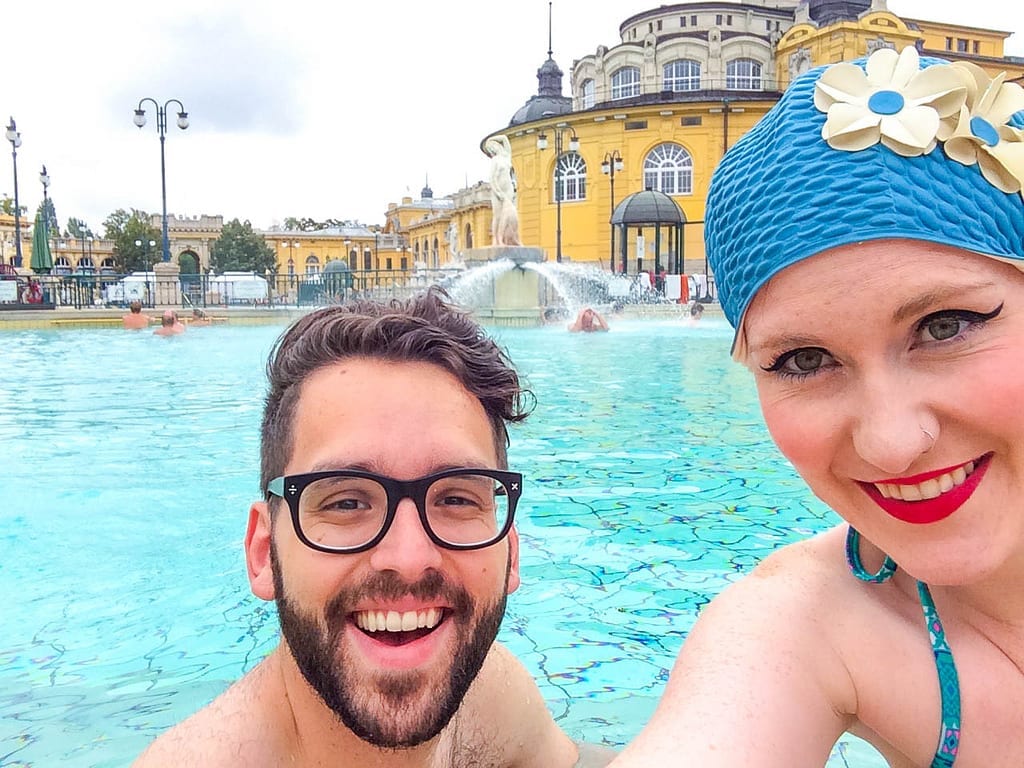
Pricing
Admission prices vary, mostly depending on the size and quality of the baths. But generally, the prices are around £6-10/per person ($7-$12 US). It isn’t necessary to buy tickets to enter the bathhouse in advance. Some websites sell spa tickets at a higher price than at the door. And it is never necessary since even on the busiest days you can always get in. This is just a scam to get tourists to feel like they NEED to pre-purchase or risk not being admitted. But if you feel like getting a massage, be sure to book these in advance to guarantee a spot. These cost anywhere from £15-60 ($17-$70 US) depending on the length and kind of treatment.
Layout
Once you pay your admission, you will be given an electronic bracelet or key to a locker or cabin where you can get changed. The lockers are included in regular admission to the spas but to use a changing cabin, this will cost extra. We tried both variations and found that the choice is more dependent on your comfort level. My husband is a bit shy when it comes to new experiences so he preferred the changing cabin since we could use this together and didn’t need to be separated.
Lockers
To open the lockers with the electronic bracelets, place your bracelet against the number on the locker and it will pop open. Magic! The lockers are only big enough for storage or your clothes and valuables. To get changed, you’ll have to use the public change rooms. These are also separated into male and female changing rooms, so if you’re here with family or as a couple you’ll need to go about this individually.
Cabins
Cabins, on the other hand, are large enough for one person or two people to change inside, as well as storing your items. If you’re a little shyer, opt for the cabins. They cost a little bit more but are worth it for the comfort.
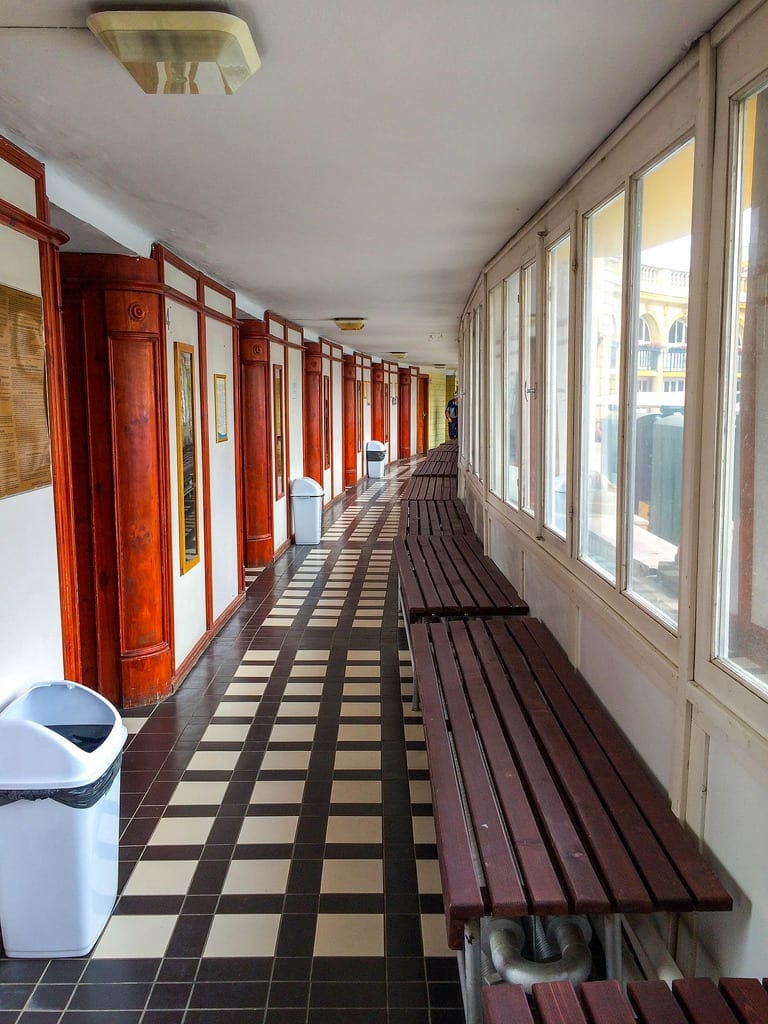
The layout of many of the spas follows a similar design. There is a large, refreshing pool where people can swim laps or just float and relax. Then there are various hot tubs for unwinding, each heated (or cooled) to a different temperature. Each of the various temperatures of the pools is designed with to help heal what ails you, the cold pools, for instance, are supposed to help with poor circulation and while it is pretty shocking to jump into it did really help my jet lag!
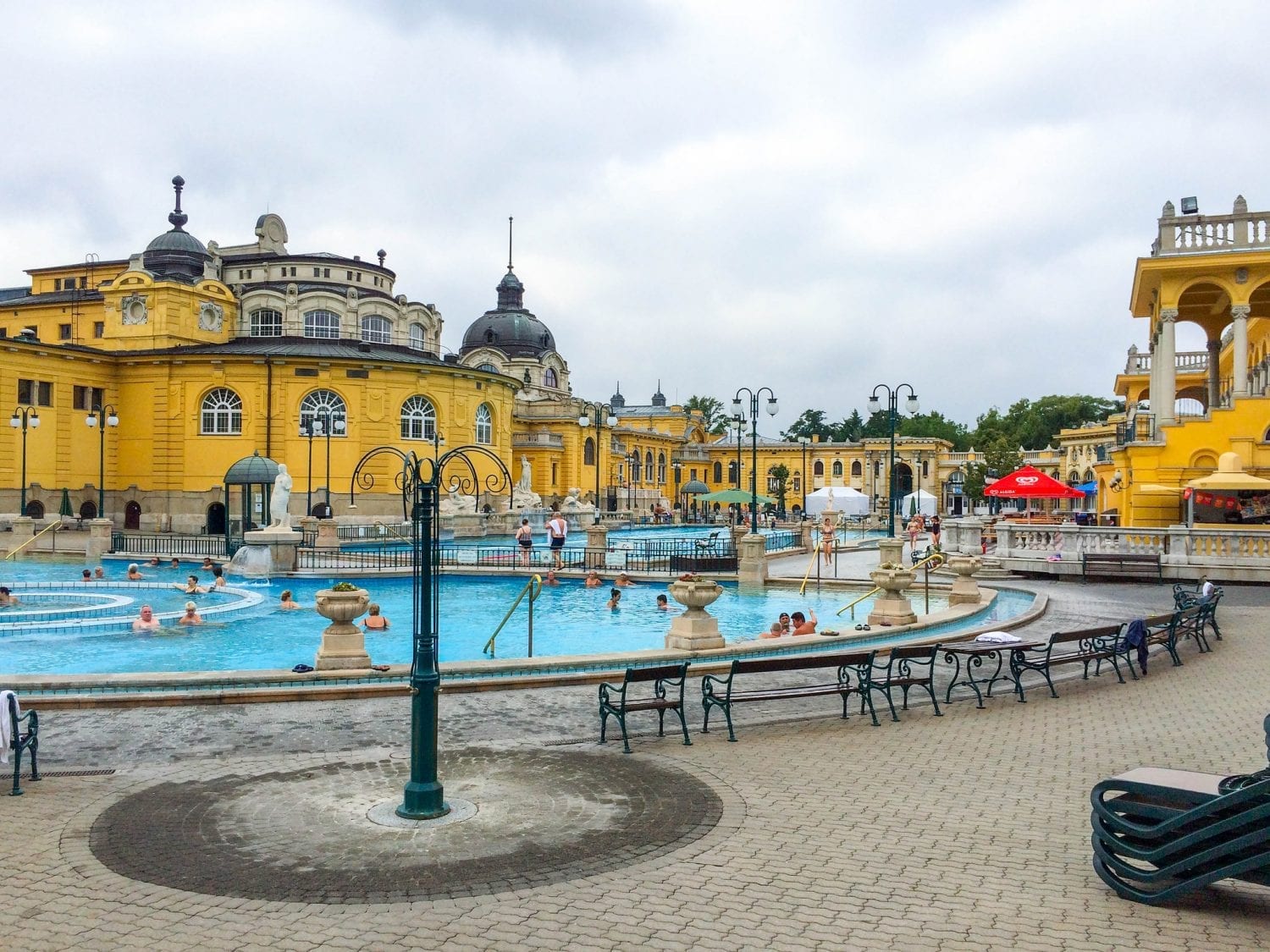
There are also various saunas, steam rooms, massage areas and lounge chairs to lie down on both inside and outside the spas. There is definitely more to do here than just soak in the waters. Be sure to explore. Many of the spas contain dozens of distinct baths, some in somewhat obscure or hidden places. If you ever get too far off course or enter an off-limits area, a kind employee will always guide you back, so don’t be afraid to walk around.
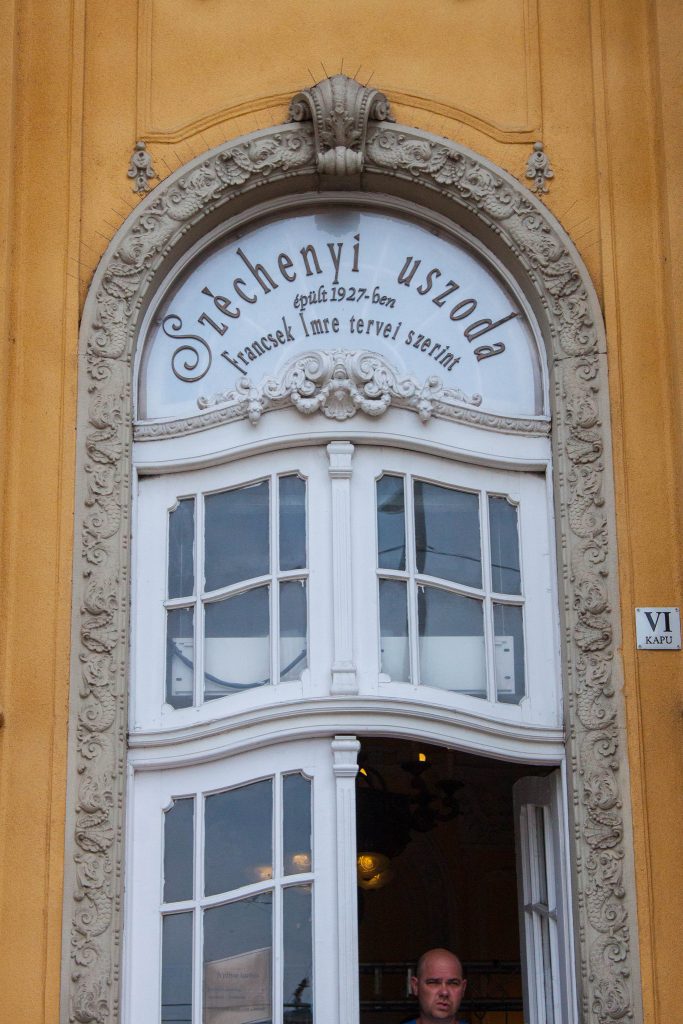
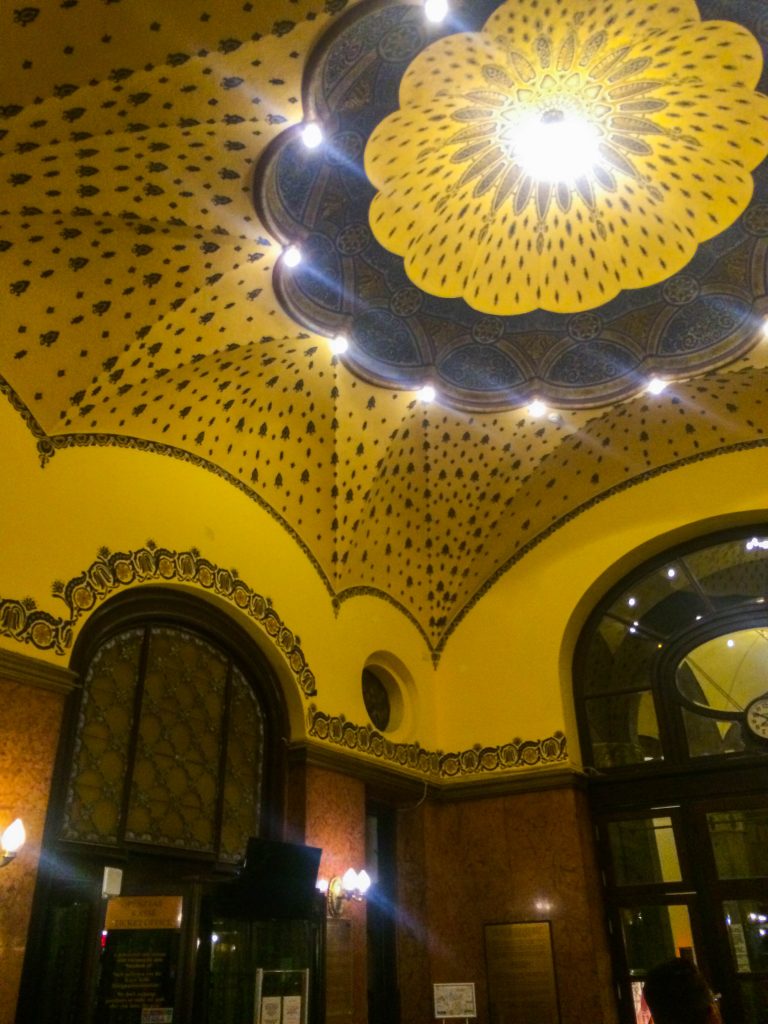
Where to Go
Széchenyi Baths
If you’re pressed for time and only have room in your schedule to visit one Hungarian Bath, Széchenyi Baths is the place to go. It’s so iconic and has a myriad of fantastical pools to explore. This bath was built in 1913 and boasts a beautiful bright yellow Neo-baroque design which gives stunning views inside and out. Inside the main outdoor pool, you can play chess while lounging in the water and even stop for a bite to eat in their cafeteria.
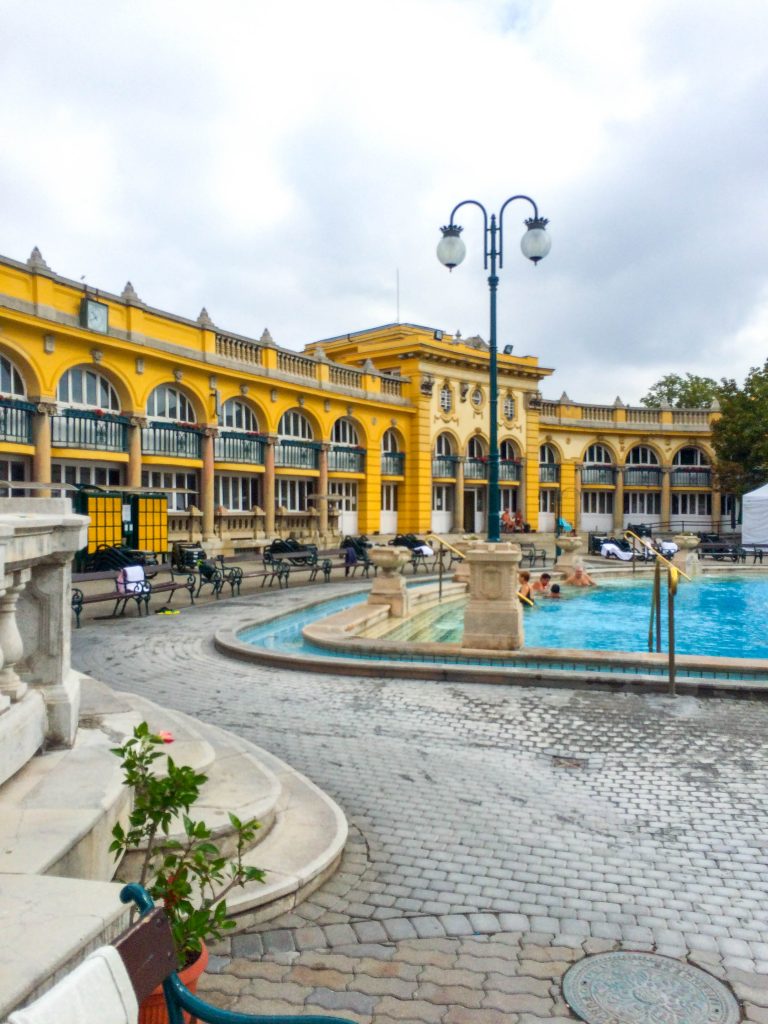
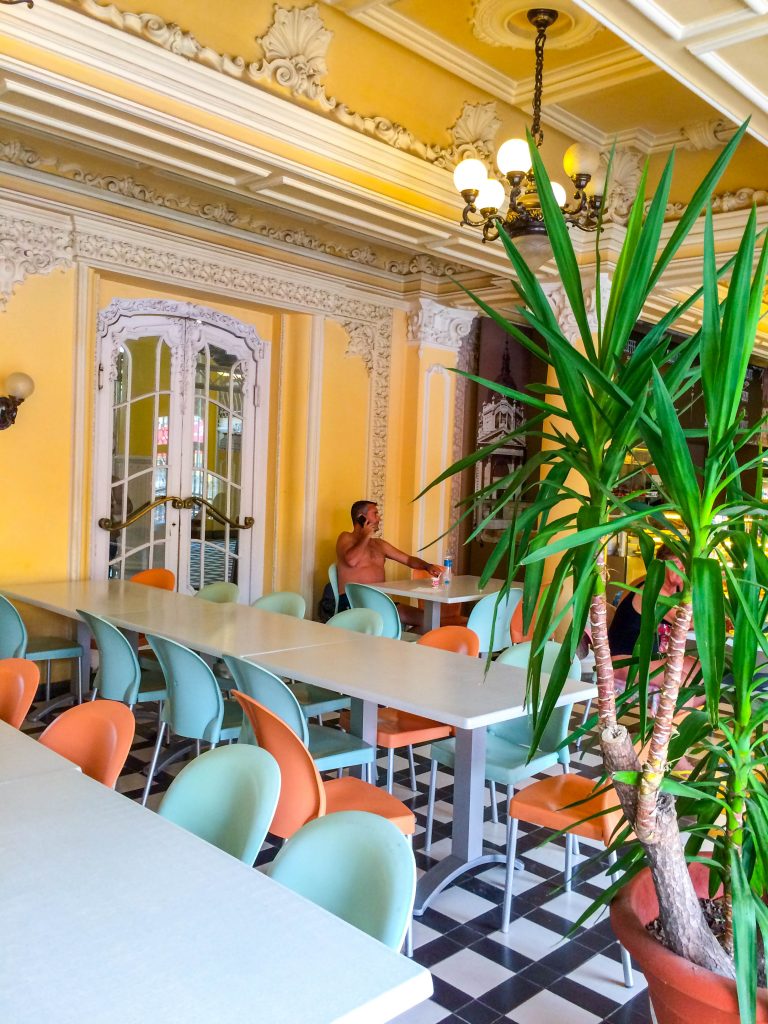
Király Baths
Király Baths is one of the most authentic spas to visit. Although it’s rather small, with only four pools, this place has stood in the same spot since the Ottoman-era and bathing in here is like stepping back in time. It’s worth visiting if you love ancient architecture or are a big history buff.
Gellert Baths
The Gellert Baths was built in 1918 and is my favourite of all the spas. It might not be as big as Széchenyi or as historic as Rudas, but the art nouveau designs throughout make it a stunning building to relax inside. Their indoor “cathedral” swimming pool with enormous stained glass skylight is the perfect place to swim no matter the season. If you feel brave enough, dip into the carbonic acid tub-bath. This bath is supposed to help with cardiovascular problems, osteoporosis and rheumatic pain.
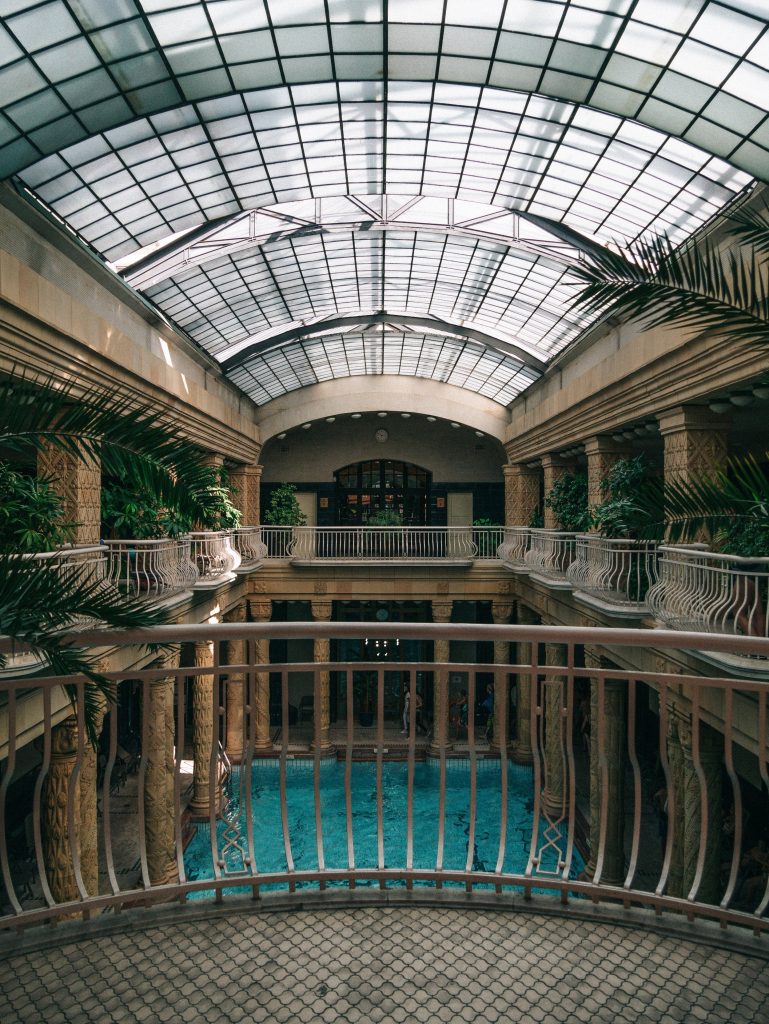
Rudas Baths
Rudas Baths are another Ottoman-era spa built around 1550. There is one sizeable octagonal areas and four smaller pools surrounding it. All of which are nestled under the quintessential Turkish dome. Rudas Baths are only mixed sexes on the weekend. Throughout the week they rotate between female-only or male-only. Be sure to check the schedule before you come.
No matter what spa you choose to visit while in Budapest, you’re bound to have a fantastic experience! Take the plunge and leave your inhibitions at the door. Soak up all the elemental goodness in those thermal waters. And leave feeling ready to continue on your adventures, renewed and refreshed.
Did you have a chance to visit any of these famous pools while in Budapest? Let me know in the comments which was your favourite thermal bath. Or if you found any hidden locations I need to visit on my next trip out there!
Happy Travels Adventurers!





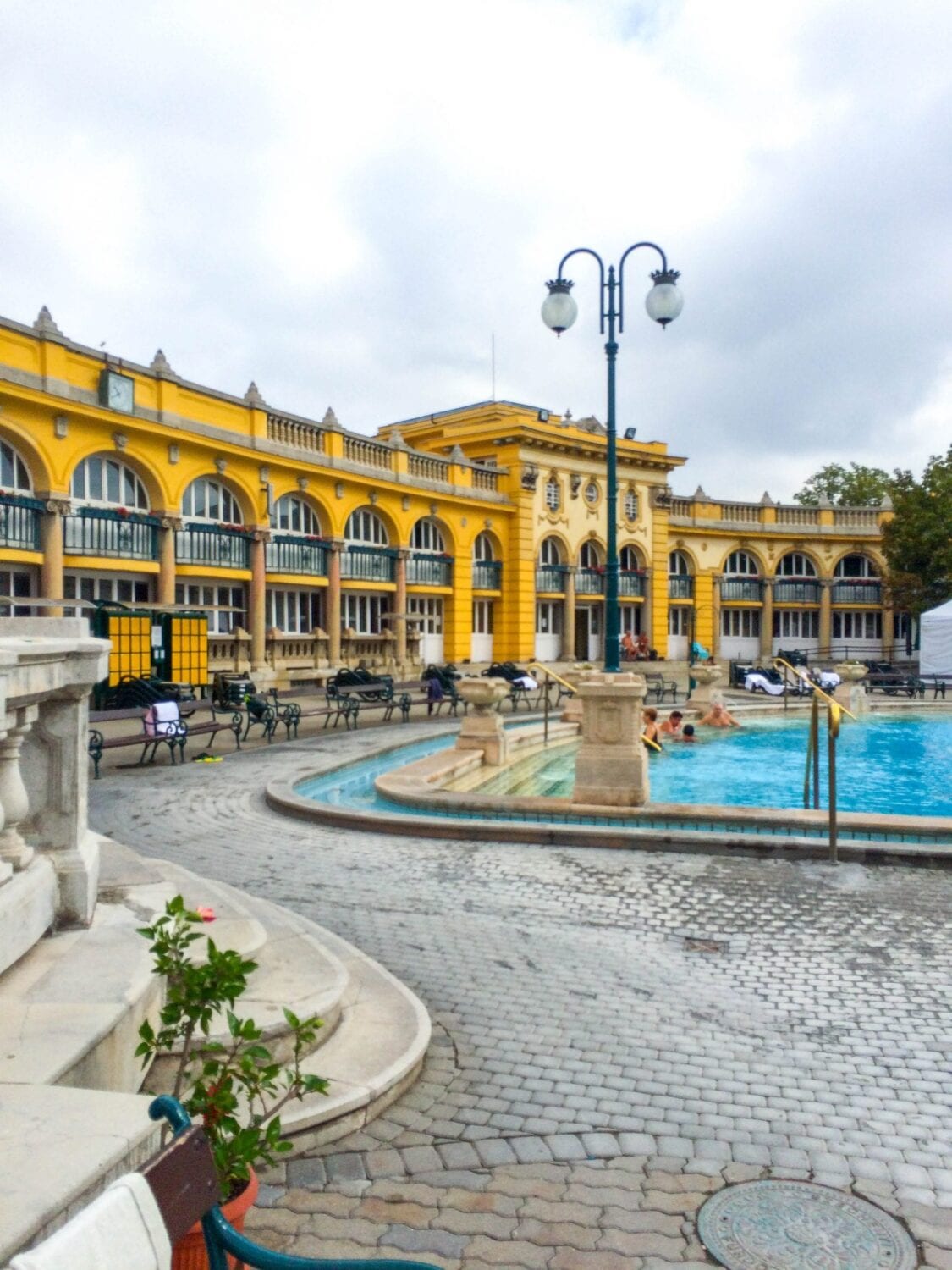
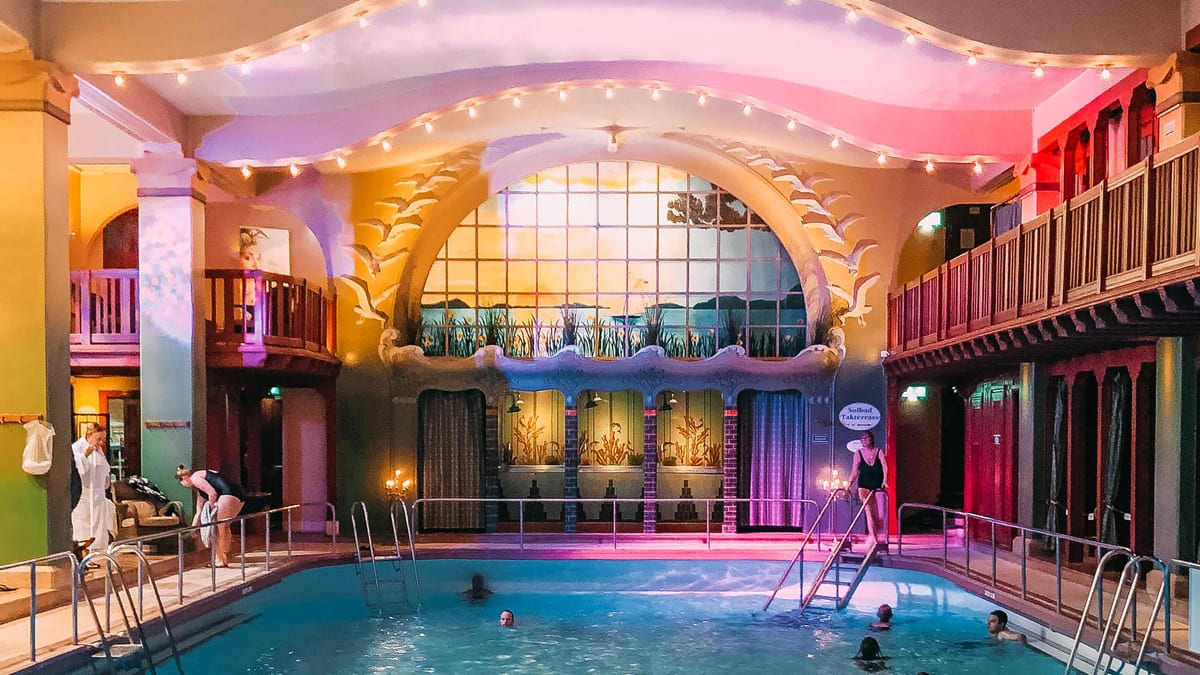
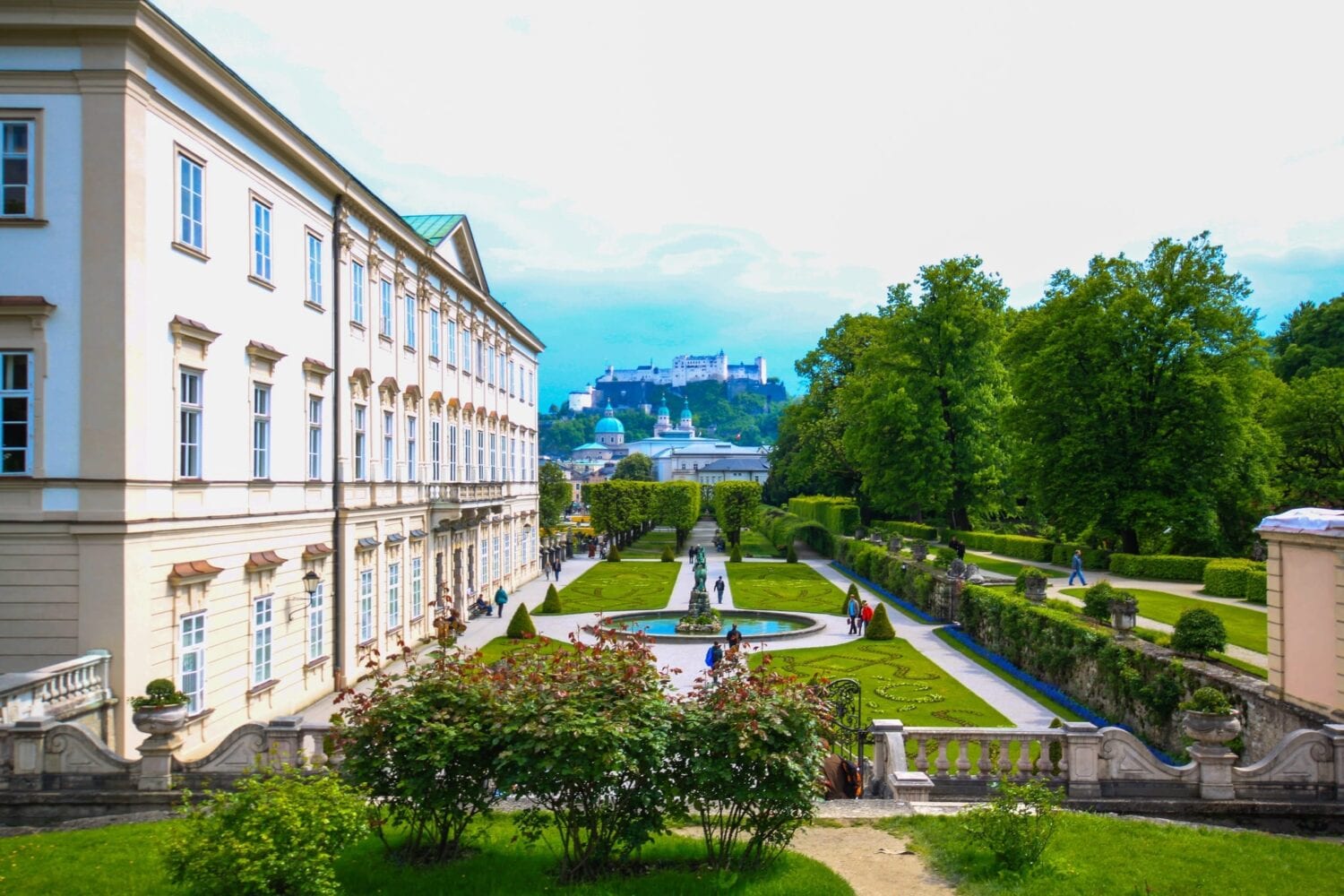
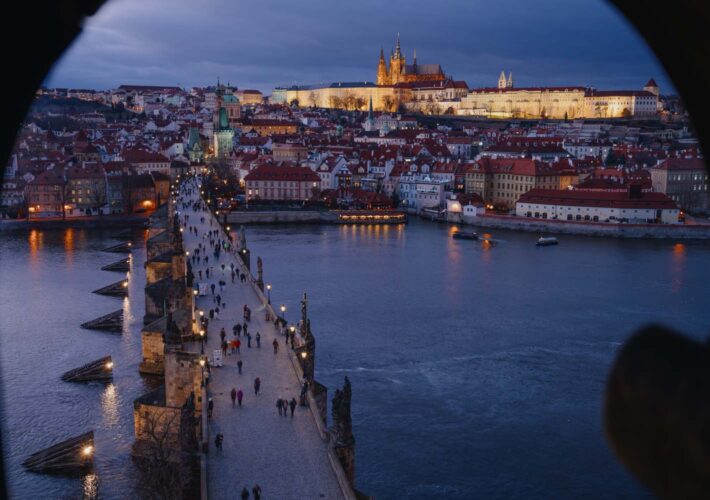

Leave a Comment